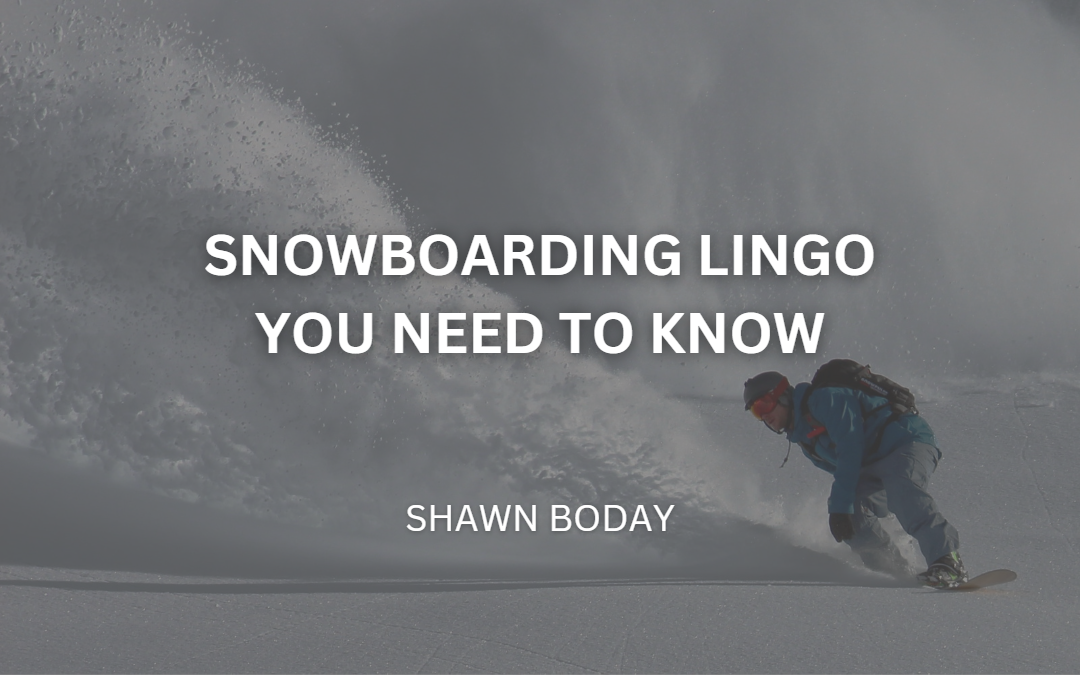The winter season is here, and snowboarders everywhere look forward to experiencing the magic of the season. However, the language and jargon used on the slopes can be confusing for both beginners and experts. Our vocabulary shifts as soon as we strap on our boards, leaving some unsure of what’s being said.
As winter arrives, snowboarders look forward to experiencing the magical sensation that only this season can bring; however, with all the excitement, there can be some confusion regarding the terminology snowboarders use. Both beginners and experts can be overwhelmed by the language changes that come with the season.
To hold a conversation with someone on the slopes, you’ll need to get acclimated to some of the terminologies you may hear out there. Whether you’re just starting out or already an expert snowboarder, it’s never too late to update your knowledge on the latest snowboard lingo. To help you become familiar with snowboarding terms, here is a guide with some of the most commonly used words, phrases, and lingo you’ll hear on the slopes!
“There’s freshies on the super-jib in Tahoe, brah.”
Tony Hawk popularized the phrase “There’s freshies on the super-jib in Tahoe, brah” in the opening sequence of his movie “The White Album” starring Shaun White. This phrase literally translates to: “There is freshly fallen snow on the very large freestyle feature at an undisclosed resort in the Lake Tahoe Region, bro.”
“I’m gonna shred the gnar with Woolly latez today.”
“Shredding the gnar” is a slang expression used among snowboarders and other extreme sports enthusiasts to describe riding with great skill and confidence. Gnar refers to tricky, difficult terrain. Woolly is the name of an iconic, highly skilled snowboarder who shreds Mammoth Mountain. When someone says latez today, they’re referring to later this afternoon.
Squirrelly, Booter, Kicker, Stomp, Crunchy, and Steez
An alternative to loose, shaky, or unbalanced on the slopes is Squirrelly. This feeling of instability can make someone nervous or scared of getting hurt. A booter (or kicker) is a jump that got its name from the idea that the jump’s size and lip should “kick” the rider up into the air. To stomp is the act of confidently and effectively landing a freestyle trick. Steez is style, and crunchy is cool.
Backside and Frontside
A deeper understanding of the terms backside and frontside is required to describe the difference between these two terms properly. Surfing’s original use of these terms was to describe the turns they would make as they went through the waves. The words “backside” and “frontside” make sense in surfing, where a “frontside turn” means turning one’s front towards the wave and a “backside turn” means turning one’s back to the wave.
In the skateboarding and snowboarding worlds, it can be harder to understand. While these terms are commonly used for halfpipe, they seem to be backwards when it comes to spins. For instance, a frontside spin is when a rider spins toward their back while opening their front to the jump landing. On the other hand, a backside spin is when a rider spins toward their front.
A frontside slide is performed when your back is towards the end of the rail, box, or other jib surfaces. To do a backside slide, you need to be facing the front. To do a frontside slide, you would spin backwards, and to do a backside slide, you would spin forwards.
Other Lingo
The double cork is a maneuver in which the athlete flips upside down twice, yet it is not classified as a flip. People are puzzled as to why this is the case.
A garage sale is a type of wipeout that can cause your equipment to fly away from your body. It’s as if a garage sale exploded all over the run, with goggles, beanies, gloves, helmets, and other items scattered haphazardly on the slope.
A bonk is a snowboarding trick in which the rider intentionally hits a non-snow object, such as a tree stump, with their snowboard. Gapers are tourists or posers who have a wide open mouths and bad posture while staring in amazement at things that locals find uninteresting or lame.
The tindy and the tailfish are among the least impressive tricks you can do. A tindy is where you hold the back binding and the tail of your board on the toeside edge, while a tailfish is the same motion on the heelside edge. Not only do these tricks look bad, but they are also an indicator of laziness; why settle for a tindy when you can pull off a tailgrab, a stalefish, or an indy? Push yourself to do something more difficult and stylish. Your friends will respect you for it, and you’ll be able to shred with the best of them in no time.
Whether you are experienced or just beginning, having a good knowledge of the language used in snowboarding will help to keep you and other people around you safe and secure.

